What do you think about a protest that is at once attacking the Hindu Right’s policing of Valentine’s Day by promising/threatening instant-made marriages to (heterosexual) lovers found loitering around and at the same time, speaking out about the very institution of marriage and the merchandising of love on V Day? At a time when Lisa Haydon was being made into this year’s Damdami Mata for the benefit of the predominantly heterosexual male collegiate sexual frustration, phew, a certain Vidhyalakshmi Kumari’s call to march against the Hindu Mahasabha’s dictates was being translated into yet another show of police authority. The protestors, as the decked up baraatis, had planned to walk up to the Mahasabha’s headquarters at Mandir Marg, daring them to get the protestors married to each other, but before the baraat could even start, people were pushed and dragged into buses by the police. The road was already barricaded. Someone in khakhi screamed “section 144!” A birdy chirped something about the Home Ministry’s involvement. A woman was dragged by her blouse to the bus. The media people as the perfect shaadi photographers kept on clicking pictures. As baraat swagat rituals go, this seemed to be the state’s alternative to Paan Parag.
The delightfully spacious inner courtyard of the Parliament Street Police Station, where those protesting were kept for hours without food, also doubles up as the perfect sangeet venue. If the idea to start renting it out for weddings and mata ki chowkis strikes the DSP, then you know where it came from. Using the rituals of the very institution of marriage that was being questioned as the inevitable end to every [heterosexual (Hindu)] relationship, the Mahasabha was mocked as the protestors sang songs, both regional and Bollywood, and danced till the police too started tapping their feet along. Delhi Sultanate was there along with Begum X; they both sang at the ‘sangeet’. Poets let out their poems of hate and love. Wedding songs from Odisha, Chhattisgarh, Bengal and Assam were appropriated with changes in words. Fake Ghar Wapsi tickets were being issued. A modern-day khaki-shorts-white-shirt wearing Draupadi got ‘married’ thrice, to three different women. Right outside the police station, simultaneous protests were going on. If the aim was to contain the unrest, then the only thing the police managed to do was to bring it right to its own doorstep, literally.
Was the protest a success? The answer depends on whom you ask. The protestors certainly didn’t get to march up to the Mahasabha HQ, but that was always a possibility inside everyone’s mind, echoing the Kiss of Love protest against the saffron-cousin RSS. But the protest did get its point across. People aren’t going to sit complacently while one right wing outfit after another issues a new ridiculous fatwa every day. Amongst the protestors themselves, there were different fractions. Some were for marriage equality; some were out rightly against the very institution of marriage. Opposing leftist parties made their own noises. While some feared that the protest was verging on the edge of frivolity, some thought that the celebrations around the mock weddings and the very real sangeet were a very effective tool. The protestors never harbored the idea that they could actually physically challenge the thugs of the Mahasabha, the point was to mark the voice of dissent. The party ruling the roost at the Centre comes from a pantheon of a zillion saffronist parties, no wonder then that a ‘sadhu’ politician from the Mahasabha could get away with promising death to Delhi’s new CM, that outfits like VHP could harass people using such devices as ‘Love Jihad’ and Ghar Wapsi, that ancient sci-fi epics regularly get categorised as actual science. The Mahasabha’s threat and the response of Vidhyalakshmi and her friends have to be seen in relation to all of this and not as an isolated case of cause and effect.
Going back to the question that we started with; what do we think of such a protest? A voice of dissent? An example of Delhi’s mass protest culture? Of the many things that we can think of, the one that remains above all is that of an inclusive space, where the only thing that is not included is moral policing of any sort. On the event page, the organisers say that the protest is against every kind of regulatory practice imposed on people at large by popular culture, be it marriage or the corporatisation of a single day to love with the help of cards and teddy bears or the usage of such practices by groups to spearhead a mutilated idea of national identity. At the same time, they recognise that marriage is a “strategic tool in hands of lovers who transgress various caste, gotra, religion, class, sexuality and age boundaries,” and that while marriage as an institution remains one that should be “dumped in the garbage bin of history”, they “stand in solidarity with all forms of love and marriage recognised as illegitimate and ashuddh in our society”. It is this negotiation of opposition and support that gives it its inclusive character. At a time when Charlie Hebdo shows us both the intolerance to criticism and the cooption of satire to pass off as xenophobia, Shudh Desi Romance reminds us that satire still remains one of the best weapons against State-supported fascism. One can only hope that the Mahasabha gets the message this time.






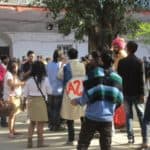


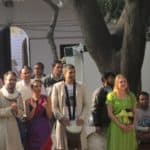

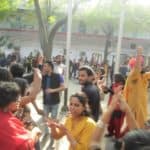






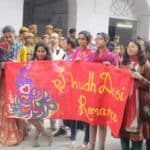
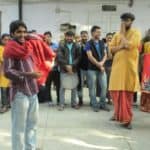

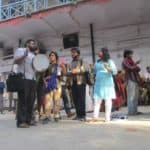

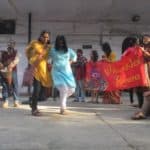



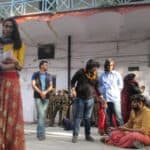
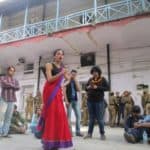




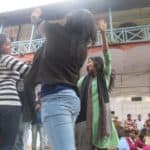







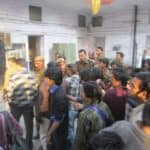







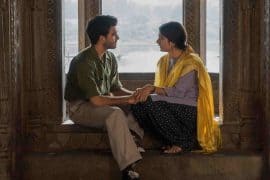

Comments are closed.